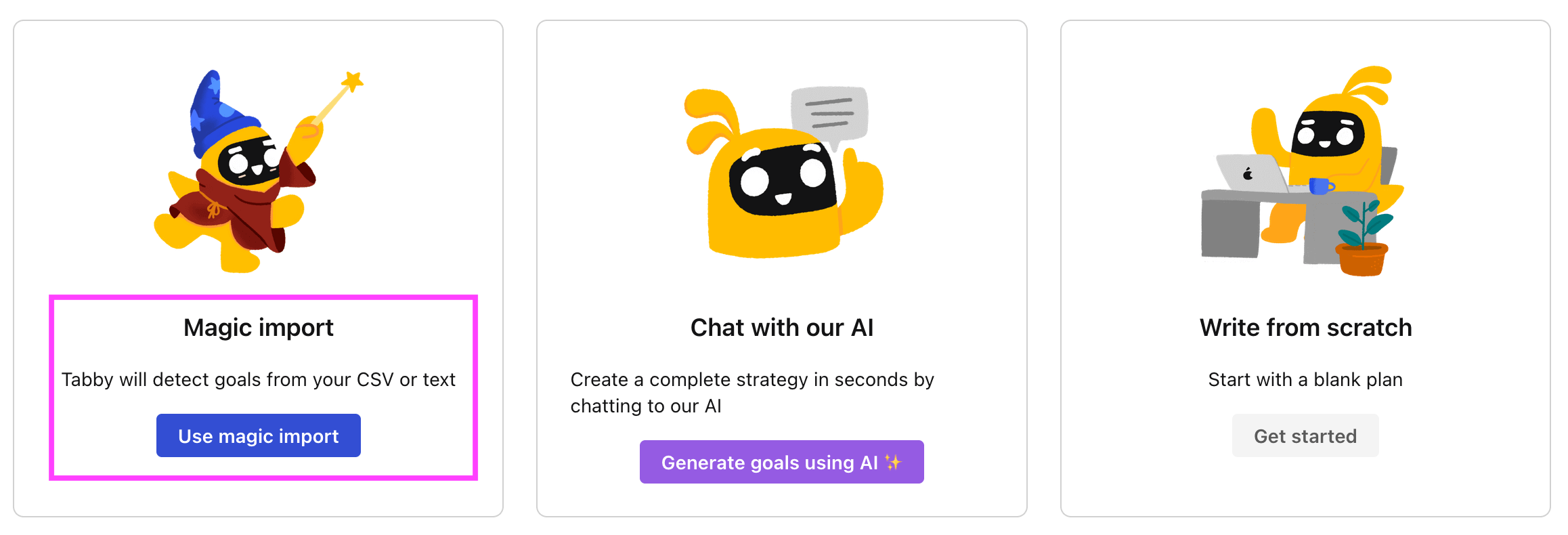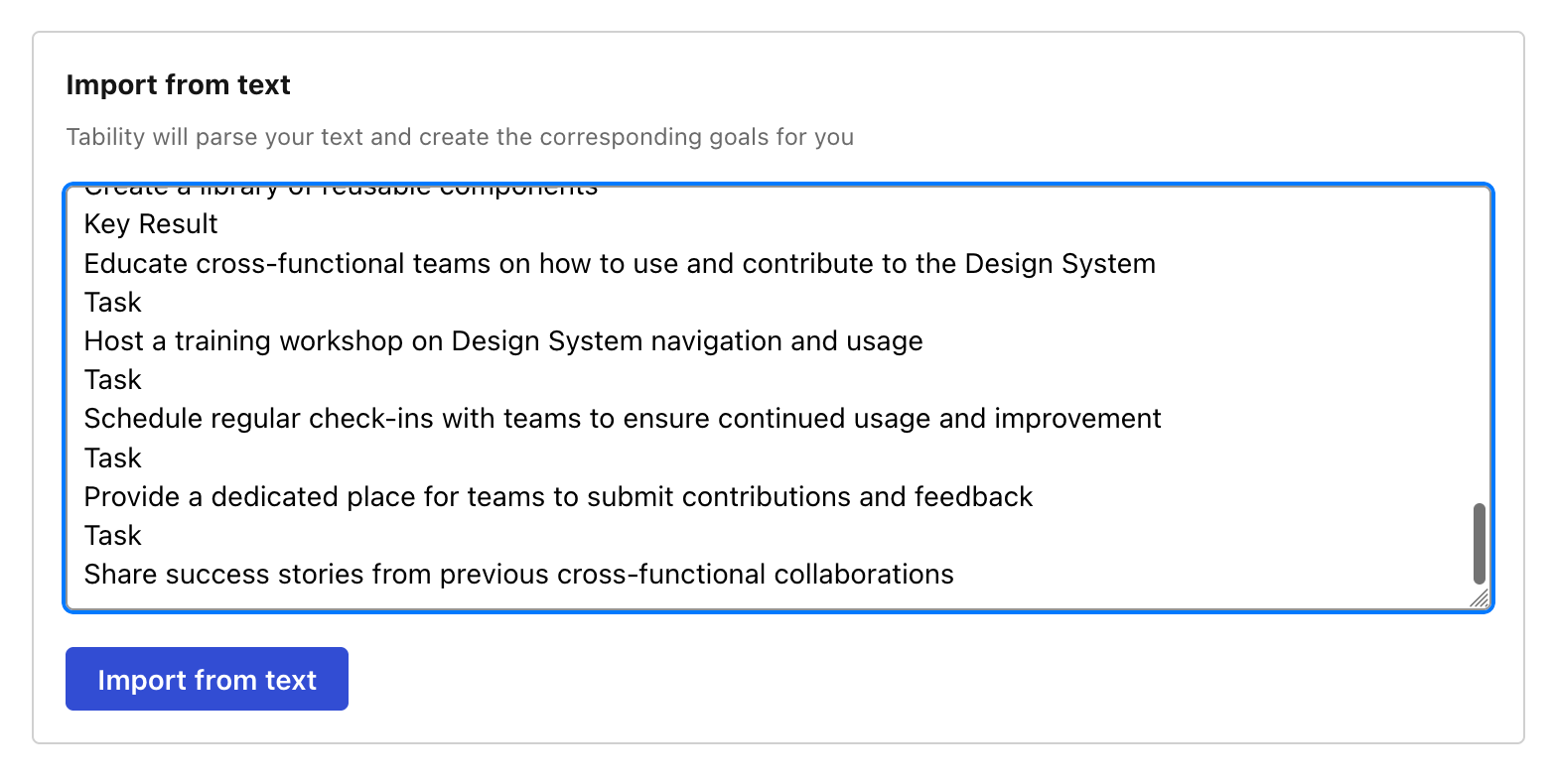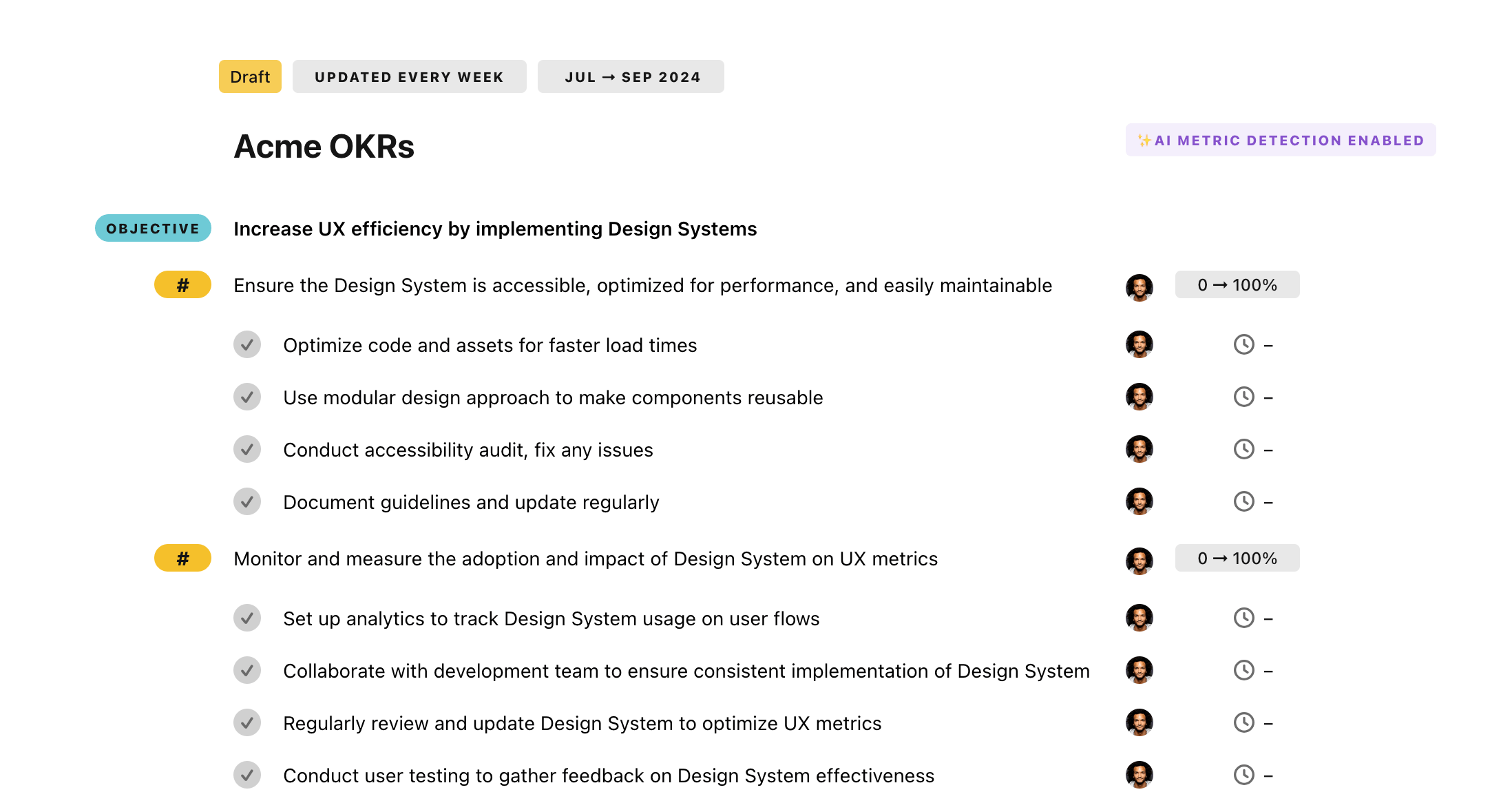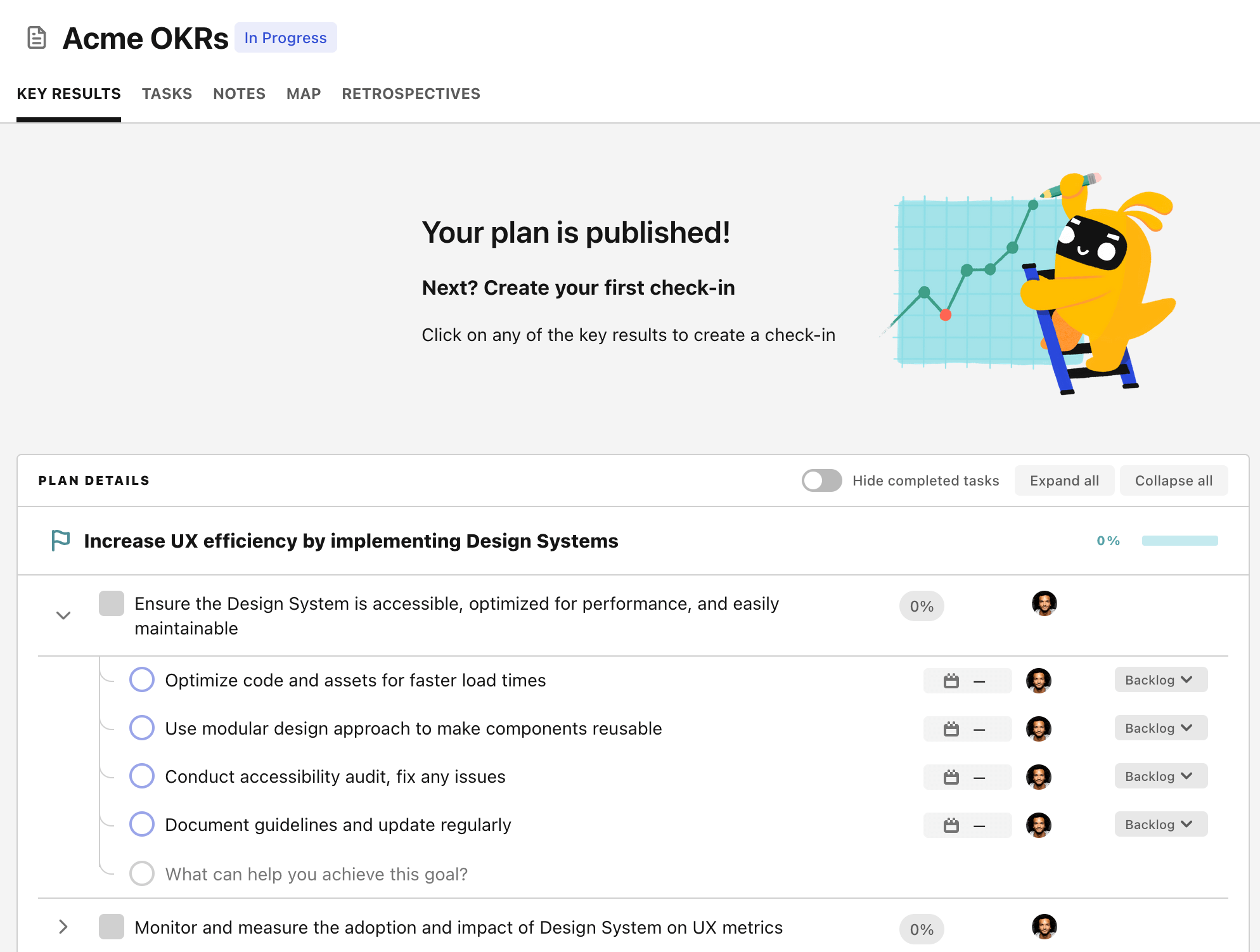OKR template to efficient inventory control for 50 products
Your OKR template
Another significant aspect of the key objective is to ensure that 80% of the staff is proficient in new inventory control procedures, in order to promote widespread adoption. This end will be met through monitoring and documenting staff training progression, scheduling staff for training sessions, and creating an inventory control procedure training program.
The addition of a digital tracking system for all products within the inventory is also a priority. This will involve the identification of suitable digital tracking software for inventory, training of staff on using the selected software, and the integration of the tracking software into daily operations.
The underlying purpose of these objectives is to streamline the inventory control process and reduce stock-related issues. The initiatives aim to instill a culture of efficient stock management among the staff and optimize inventory tracking through the adoption of a digital tracking system.
ObjectiveEfficient inventory control for 50 products
KRReduce out-of-stock incidents by 20% through improved inventory management
Implement an automated inventory tracking system
Train staff on efficient stock management
Establish regular inventory audits
KRTrain 80% of the staff in new inventory control procedures to ensure widespread adoption
Monitor and document staff training progression
Schedule staff for training sessions
Develop inventory control procedure training program
KRImplement a digital tracking system for all products within the inventory
Identify suitable digital tracking software for inventory
Train staff on using the chosen software
Implement tracking software into daily operations
How to edit and track OKRs with Tability
You'll probably want to edit the examples in this post, and Tability is the perfect tool for it.
Tability is an AI-powered platform that helps teams set better goals, monitor execution, and get help to achieve their objectives faster.
With Tability you can:
- Use AI to draft a complete set of OKRs in seconds
- Connect your OKRs and team goals to your project
- Automate reporting with integrations and built-in dashboard
Instead of having to copy the content of the OKR examples in a doc or spreadsheet, you can use Tability’s magic importer to start using any of the examples in this page.
The import process can be done in seconds, allowing you to edit OKRs directly in a platform that knows how to manage and track goals.
Step 1. Sign up for a free Tability account
Go tohttps://tability.app/signup and create your account (it's free!)
Step 2. Create a plan
Follow the steps after your onboarding to create your first plan, you should get to a page that looks like the picture below.

Step 3. Use the magic importer
Click on Use magic import to open up the Magic Import modal.
Now, go back to the OKR examples, and click on Copy on the example that you’d like to use.

Paste the content in the text import section. Don’t worry about the formatting, Tability’s AI will be able to parse it!

Now, just click on Import from text and let the magic happen.

Once your example is in the plan editor, you will be able to:
- Edit the objectives, key results, and tasks
- Click on the target 0 → 100% to set better target
- Use the tips and the AI to refine your goals
Step 4. Publish your plan
Once you’re done editing, you can publish your plan to switch to the goal-tracking mode.

From there you will have access to all the features that will help you and your team save hours with OKR reporting.
- 10+ built-in dashboards to visualise progress on your goals
- Weekly reminders, data connectors, and smart notifications
- 9 views to map OKRs to strategic projects
- Strategy map to align teams at scale